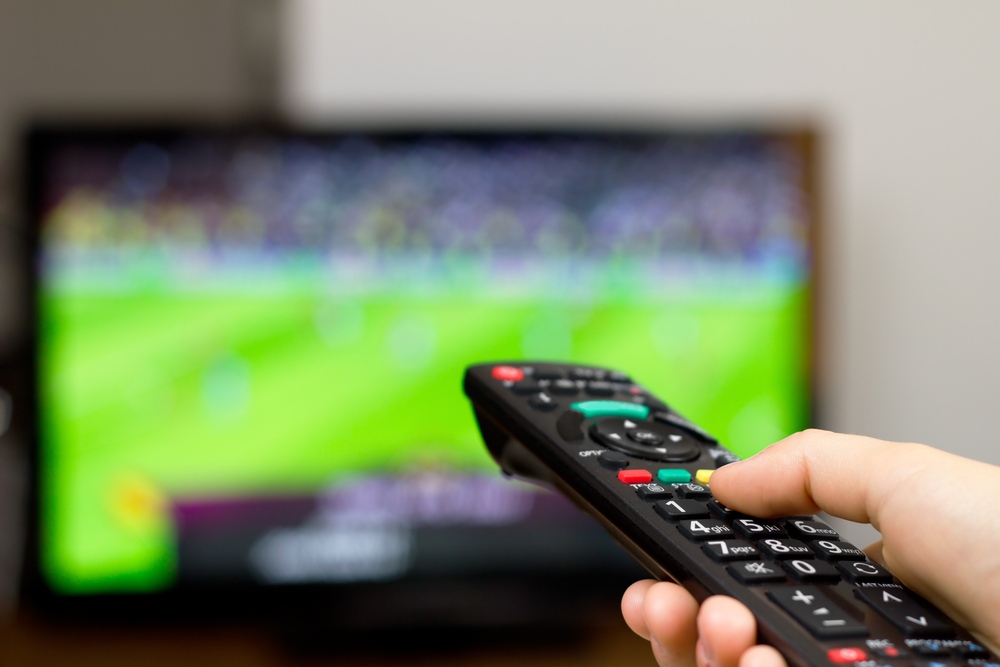
On February 7, more than 100 million people will be tuning in to the 55th Super Bowl to see the Kansas City Chiefs take on the Tampa Bay Buccaneers. The Super Bowl is one of the most watched televised events of the year and, with ongoing COVID restrictions and capped in-person attendance, more fans than ever will be watching from home. For many people with hearing loss, watching TV may be difficult even in the comfort and quiet of their own home. Many find themselves turning to the remote control and cranking up the volume on the TV set, but that may not always be the best solution. Turning up the volume may cause the sound to become distorted, making it even more difficult to understand. Additionally, that increased level may be uncomfortable for others in the room trying to watch the game with you. If listening to the TV has become an issue for you and your household, you may want to consider ways to improve your viewing experience this year. TV listening devices, headphones, closed captioning, and even hearing aids that stream TV audio directly to your ears may be great alternatives for you and your watching companions to have a healthy listening environment.
One of the listening devices that can provide comfortable, clear sound is an audio headset. These usually involve a device connected to the TV (typically via the output jack). The sound is then sent directly to the headset using a variety of methods, sometimes including infra-red technology, which uses light as the transmission method to send the audio signal to the headset or receiver unit. The other people in the room can then listen to the TV at normal volume levels. Many of the newer TV sets also have the capability to send sound wirelessly to headphones, usually using Bluetooth. The process involves pairing the headphones to your TV, thereby allowing you to enjoy the broadcast at your own volume level.
Closed captioned TV provides the capability to both listen to the TV’s audio and read the speech on the screen. The Federal Communication Commission (FCC) has required captioning on TVs larger than 13 inches since July 1993. To access this feature, look for the “CC” symbol on your TV remote or within your TV settings to engage this service. The captioned speech will run at the bottom of your TV screen like subtitles.
For those who already wear hearing aids, there are several options to improve watching the big event. In most cases, you will need a TV and hearing aids that have Bluetooth capabilities. One method involves the use of a small device attached to the TV, referred to as “intermediary devices.” Most are specific to your brand of hearing aids so check with your hearing care professional to ensure you have the correct model and to gain guidance on how to pair your hearing technology with your TV. Once paired with your TV or intermediary device, audio can be sent directly to your hearing aids. Most hearing aids have the capability to adjust the overall volume either by a volume control on the hearing aid itself or via an app on your smartphone. One additional option is a specific program in your hearing aid for TV listening that may be added by your hearing care professional. Once again, the user can control their personal listening level and allow a normal volume for others in the room. If your hearing aids do not have Bluetooth but are equipped with a T-coil, you may be able to use a neck loop device. These usually connect via the output jack on your TV by inserting a small device that sends a signal to the neck loop/receiver and then to the T-coil connection of your hearing aids. A small loop system can also be installed around the perimeter of your TV room which would likewise send a transmission to the T-coil on the hearing aids.
Soundbars can also be a great tool. These are a small box that supplement or replace the small speakers in most TVs. Soundbars sit under or next to your TV and many now offer options to adjust the bass and treble sound for those with hearing loss.
So, for the over millions of people that will be watching the Super Bowl, there are many options available to increase your enjoyment of the game while keeping those around you happy. If you have hearing loss and would like to gain clearer audio of the game, or if you wear hearing aids and would like to use the accessories listed above, please consult with your local hearing care professional about ways that you can better connect to your environment.
ENJOY!